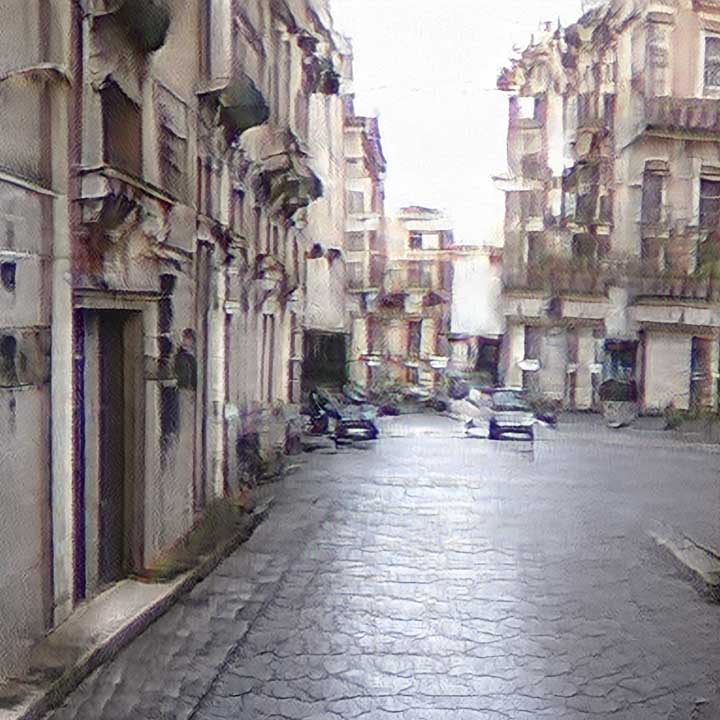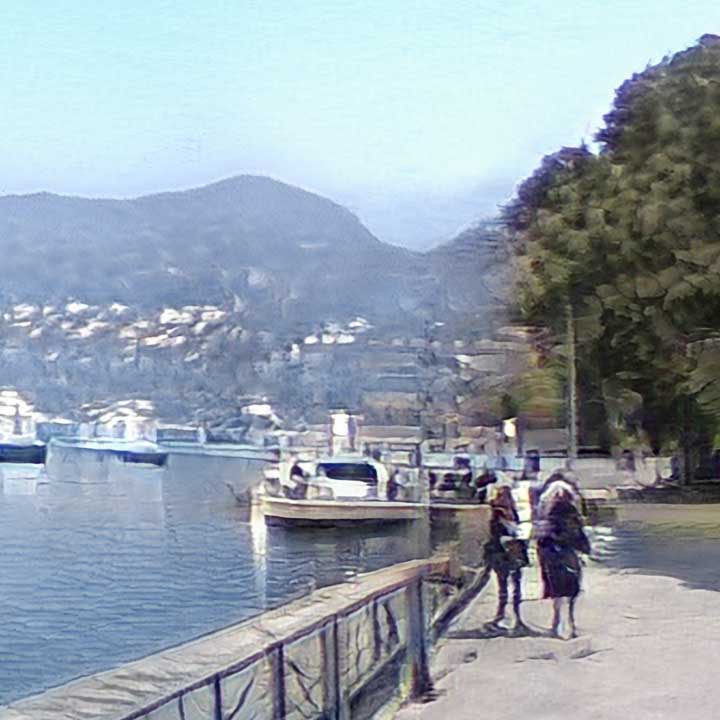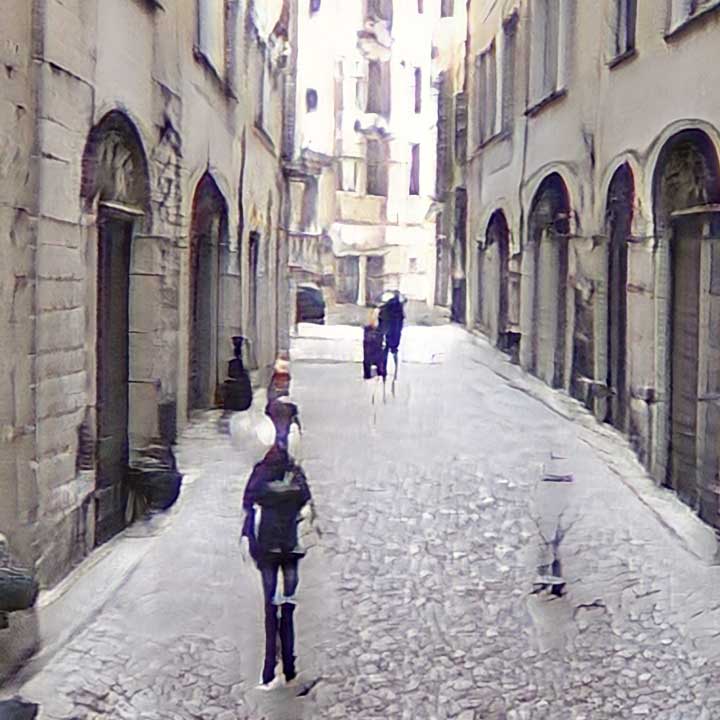Strolling Cities: street-view imagery and vocal input to explore cities through AI
An immersive A.I. Art experiment between poetry and photography for the Italian Pavilion at the XVII Venice Architecture Biennale.
The “Strolling Cities” art installation is an immersive, multi-sensorial experience that takes spectators on an oneiric walk through the empty streets and squares of 9 Italian cities – Milano, Venezia, Bologna, Roma, Como, Bergamo, Genova, Catania and Palermo. It combines AI, poetry and urban landscape to create a metamorphic portray of each city devoid of people due to the 2020-2021 COVID-19 lockdowns.
Partners
Visual Artificial Intelligence Lab at MIT-IBM Watson AI Lab
Navigation
Strolling Cities: How we live together?
The spectator of the oneiric journey presented in “Strolling Cities” stands still as the AI dynamically combines millions of images collected across 9 iconic Italian cities – Milano, Venezia, Bologna, Roma, Como, Bergamo, Genova, Catania and Palermo – during lockdowns by means of extensive street-view photographic survey with the vocal timbre and rhythm of the expressing readings of a curated selection of poetry.
The project was conceived by scientist and artist Mauro Martino, director of the Visual Artificial Intelligence Lab at MIT-IBM Watson AI Lab, and realised thanks to a collaboration between MindEarth, a team of researchers from the Department of Architecture, Built Environment and Construction Engineering at the Politecnico di Milano (Prof. Ingrid Paoletti, Maria Anishchenko, Seyma Adali, Luca Stornaiuolo) and a researcher in Italian poetry and literature at Harvard University, and is currently exhibited at the Italian Pavilion of the XVII Venice Architecture Biennale, asking the question “How we live together?”
Photographic survey
Equipped with the latest version of the MindEarth Backpack (MEB), our original street-view survey kit for continuous street-level imagery acquisition – specifically designed for dense urban areas – a group of students from the Politecnico of Milan walked through the empty streets of Milano, Venezia, Bologna, Roma, Como, Bergamo, Genova, Catania and Palermo during lockdown, and gathered an impressive set of over two million photographic images. The unique situation triggered by the 2020-2021 lockdowns allowed students to document the selected cities virtually free of crowd, traffic and noise – an unrepeatable condition for highly touristic cities like Venice, Milan or Rome.
Poetry
For each of the nine cities one or more timeless “poetic fragments” were selected — from Cesare Pavese to Alda Merini, from Giulia Niccolai to Stefano Benni, tied together by 10 short excerpts from the extraordinary “Invisible Cities” by Italo Calvino – a collection of tales of 55 imaginary cities, framed as a conversation between venetian merchant and explorer Marco Polo and Kublai Khan, Great Emperor of Mongol and Tartars. To give voice to the 18 authors are two great Italian actors: Federica Fracassi, who interpreted the poetic fragments on Milan, Como, Bergamo, Venice, Bologna, Genoa, Rome, Catania, and Palermo, and Michele Di Mauro, as the narrative voice to Calvino’s Invisible Cities.
A.I.
To link photographic imagery and poetry the “Voice-to-City” A.I. technology was created. Based on generative artificial neural networks, the software can seamlessly piece together urban landscapes in real time using any kind of vocal input, from simple utterances to more complex sounds, such as words and phrases or, as in this case, poetry. When fed to the A.I. model, images and voice creates perpetually-moving impressionistic video-paintings, resulting an intimate and emotionally charged multi-sensorial experiences of the ordinary, familiar landscape of cities – streets, everyday squares, shop windows, walls, doors…
Urban landscapes of (extra)ordinary beauty
Because the A.I. is trained to recognize recurrent patterns instead of unique instances, the urban images conveyed by the poetic words are associated with a series of common, apparently unremarkable places, leaving aside more obvious, touristic landmarks. As a result from this, the spectator is plunged into an intimate atmosphere of belonging, one that captures the everyday beauty of an urban stroll through familiar places.
All about this project and the texts used (along with their English translation) can be found at strollingcities.com.
Below, it is possible to enjoy the official video featured at the Venice Biennale – although for the fully immersive experience, the Italian Pavilion at Venice’s Arsenale is a must.
The official video featured at the Venice Biennale: images and poetic texts were used to generate the landscape of 9 Italian cities.
More projects of interest:
Advanced deep-learning for the estimation of spatial wealth through Copernicus Sentinel data and sparse in-situ survey data.
Flood exposure and vulnerability mapping using street level image automatic acquisition and machine learning
Population estimation, destroyed buildings, and land use classification
Mapping the relationship between urbanization and exposure to flood at a global scale between 1985 and 2015
Urban Digital Twin model for the visualisation, navigation and exploration of multiple information layers on cities in space and time.
Mapping human behaviour before and after natural disasters using High-Frequency Location-Based data










